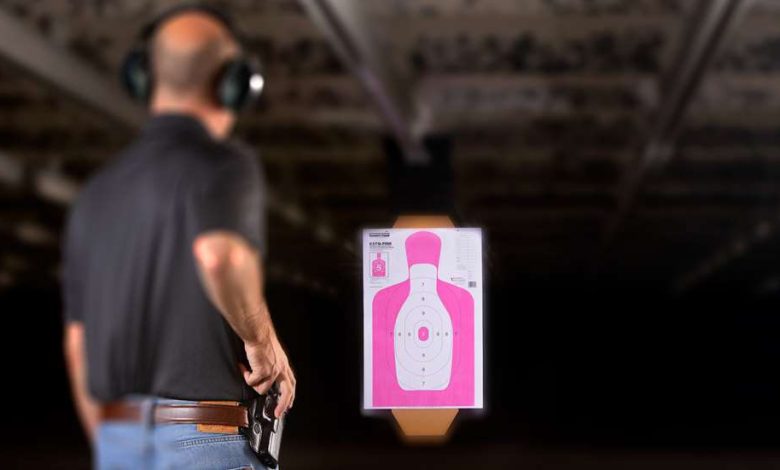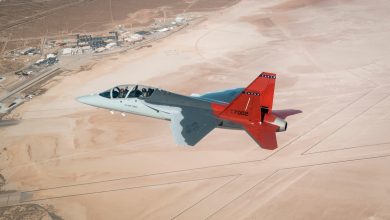Mechanical Advantage

It is said that the novice shooter can pull off success now and again whereas the professional can’t get it wrong. The well-known secret to getting it right is deliberate round placement where and when you want it. The only way possible to make this happen is by applying foundational mechanics.
We all know the fundamentals of physical mechanics can land a single round somewhere on a target. However, if you’re training for professional-level, repeatable, on-demand performance, this requires commensurate shooting structure and timing. Why not give yourself such an advantage?
Professional shooters know the only thing that causes a miss is either the muzzle alignment isn’t there from the start or you weren’t ready to break the shot. From a professional training perspective, getting it right means diagnosing and remedying ten common errors some shooters make that compromise both an optimal firing platform (structure) and on-time precision round placement (timing).
As it turns out, there are five structural errors and five timing errors that, with a little commitment and some training discipline, can be easily remedied.
Structural
Some shooters raise their shoulders as a part of their draw stroke. Although this may not impact a novice very much, if you’re trying to reach the holy grail of consistency then there’s no way you can hit a precise raised shoulder position every time. The bedrock is where your shoulders are already set at their natural resting position. You can count on this being the same every time—because it already is even without a gun.
Next is the ubiquitous “gorilla eyebrow” error. Instead of looking straight through the ocular center of their natural field of vision, some shooters tilt their eyebrows forward tucking their chin. This introduces both unnecessary and time-consuming physical input and alteration of visual perception. It tends to narrow or reduce the focal plane, which can impact overall visual acuity.
Although not as common, some shooters have wrists so loose that they look like one of those wavy arm inflatable tube guys at used-car lots. Given the lack of control introduced by “noodle arms”, wrist tension is integral to a stable firing platform.
Almost imperceptible, the micro-input of a slight head tilt to one side or lowering of the head to the gun, as opposed to moving the gun up to the visual field, is wasted movement and costs time. Even the slightest chin tuck costs time.
Last, but certainly not least, is failure to establish and sustain a durable grip throughout the shooting string. The greatest culprit in shooting—next to misalignment—is the changing of grip pressure. The only time you should change grip pressure is after you’ve holstered. At all other times it must remain unaltered if you want consistency.
Timing
A very common and easily remedied timing error is getting your strong hand on the grip module of your holstered gun faster. Purchasing that initial grip is a critical anchor to the shooting process. It doesn’t cost you any alignment time, and you can push this to the very limit of your physical capacity.
Although it’s not recommended to blow past where and when your body signals that your muzzle is kinesthetically aligned, you can certainly train yourself to bring both hands together sooner than later to stabilize the muzzle earlier in the draw stroke.
A timing error that afflicts even the most seasoned shooter is varying draw speeds. A shooter at the 7-yard line may rip out of that holster in .85 second to deliver a clean hit say in 1.15 seconds. Although stabilizing the muzzle and verifying that alignment at greater distances may cost another .45 second or so, the same shooter is advised to maintain that initial .85-second draw speed even at the 25-yard line.
The most difficult part of any draw is of course the task of taming your wobble well enough that the sights fall within acceptable margins needed for that shot and in the least amount of time. Time cost is commensurate with the technicality of the shot. However, training to wrangle your wobble earlier helps push your skills envelop beyond your comfort zone, signaling true shooter growth.
The body cannot go where the mind has not yet been. To build the shot earlier requires engaging your mind much earlier. The earlier you can get there mentally the sooner you can complete the build. The earlier you can accomplish bringing stability-to-alignment the more time it buys you to carefully break the shot.
Cleaning up such micro-timing errors buys you tenths of seconds. Two or even three of these remedied errors can lower your overall time as much as a half-second or more which is an eternity in both combat and competition.
Building and sustaining optimal structure affords you greater control of the firearm. The greater your control the more accurate your shot placement.
Leveraging this mechanical advantage, the trained shooter learns what causes a desired result and then focuses on doing it repeatedly until it no longer requires conscious effort.
Read the full article here









